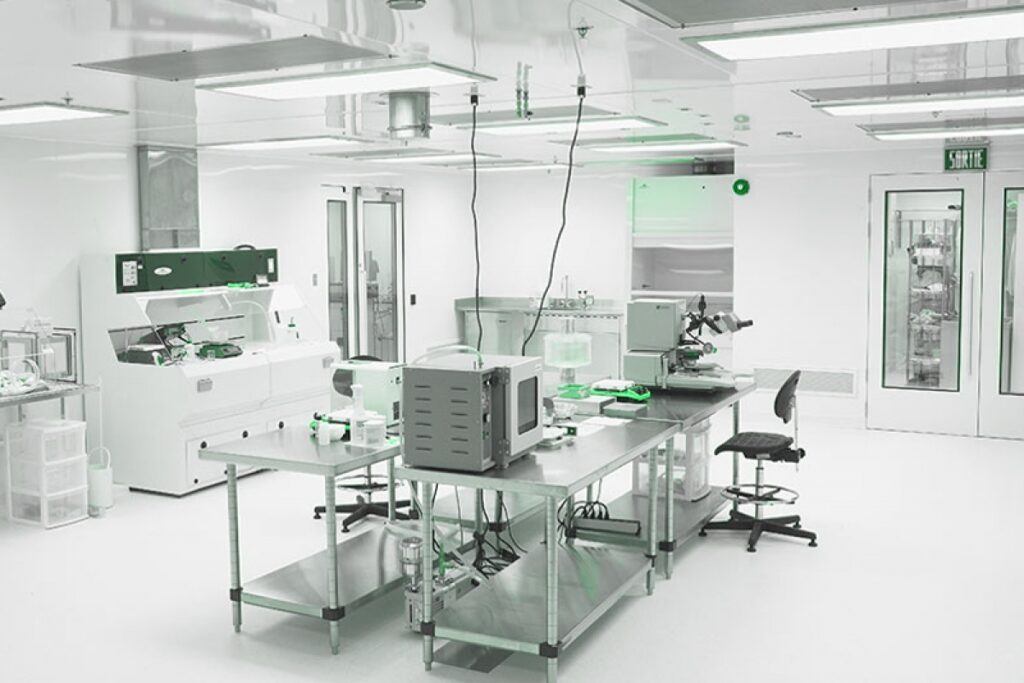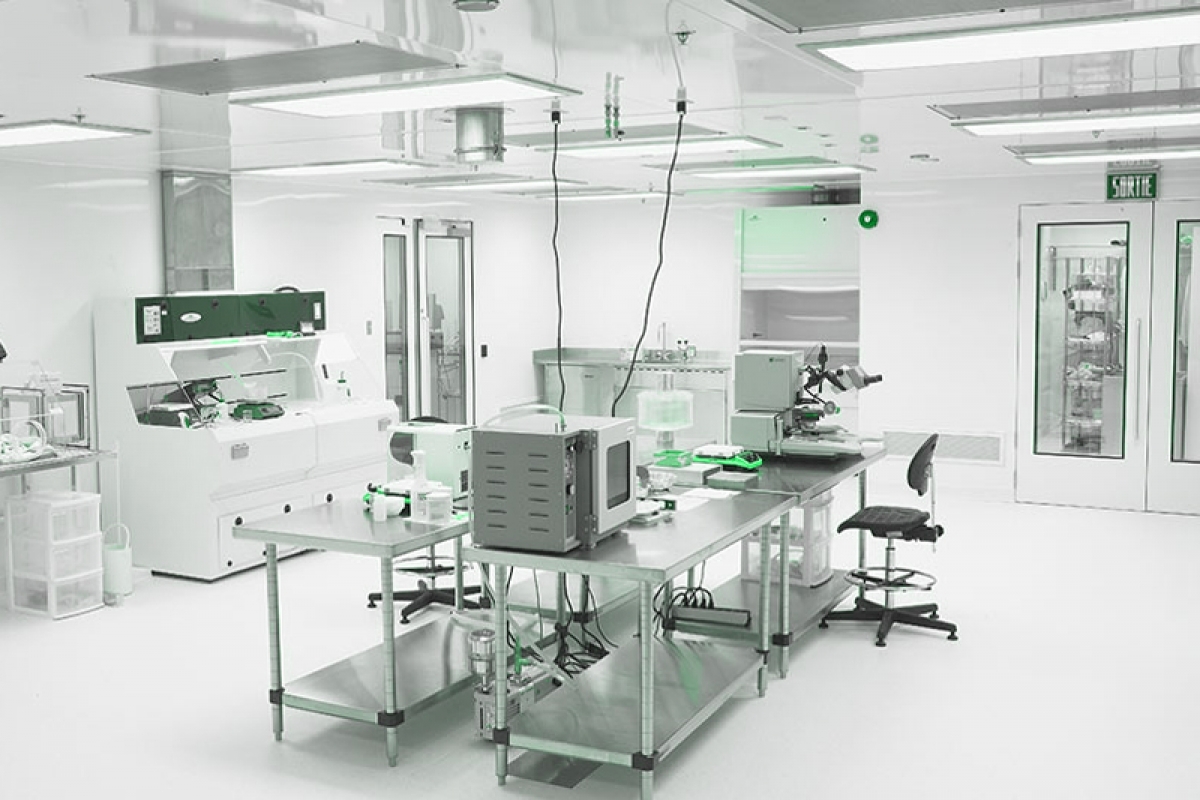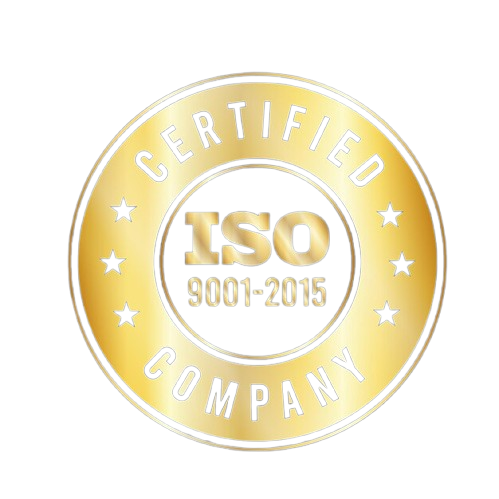The Role of Pressure Differentials in Preventing Contamination in Cleanrooms

Written by Wiselink Group, Qingdao China.
Pressure differentials play an essential role in maintaining a clean and sterile environment in cleanrooms. These pressure differences are vital to prevent the contamination of sensitive products, processes, and environments in various industries, including pharmaceuticals, biotechnology, semiconductor manufacturing, and more. In cleanrooms, ensuring that the air flows correctly and consistently is crucial to avoid contamination, as even the smallest airborne particles can have a significant impact on the final product.
Understanding the role of pressure differentials in cleanrooms and their effect on contamination prevention is crucial for businesses aiming to maintain the highest standards of cleanliness. As industries continue to rely on cleanrooms for their operations, it becomes essential to have a thorough understanding of how to properly manage pressure differentials to guarantee the integrity of the cleanroom environment.
At Wiselink Group, we understand the importance of controlling the environmental conditions in a cleanroom to protect the production process. Our cleanroom solutions incorporate advanced pressure differential management systems, ensuring that your cleanroom operates at optimal performance levels. In this blog, we will delve into the significance of pressure differentials, how they contribute to maintaining cleanroom standards, and why you should choose Wiselink Group for your cleanroom solutions.
The Basics of Pressure Differentials in Cleanrooms
Pressure differentials refer to the difference in air pressure between different areas within the cleanroom. This pressure difference helps to control the flow of air, ensuring that contaminants are prevented from entering or leaving a controlled environment. In a cleanroom, maintaining a positive or negative pressure differential is crucial to the overall performance of the space.
Positive Pressure Cleanrooms: In some cleanrooms, the interior is maintained at a higher pressure than the surrounding areas. This positive pressure keeps air flowing outward, preventing contaminated air from entering the cleanroom. These cleanrooms are typically used in environments where contaminants must be kept away from the workspace, such as in pharmaceutical manufacturing, hospitals, and laboratories.
Negative Pressure Cleanrooms: On the other hand, negative pressure cleanrooms are designed with lower internal pressure compared to the surrounding environment. These types of cleanrooms are used to contain hazardous particles, such as in laboratories dealing with biohazards or pharmaceutical spaces where controlled environments need to isolate dangerous chemicals or pathogens.
Maintaining these pressure differentials is essential for minimizing the risk of contamination, as it ensures that the airflows are controlled, with no unwanted particles entering or escaping the environment. By controlling these differentials, it is possible to maintain both product safety and cleanroom integrity.
The Importance of Pressure Differentials in Preventing Contamination
Contamination control is one of the primary concerns in cleanroom environments. Without proper control of air pressure, contaminants such as dust, bacteria, and other harmful particles can easily infiltrate the controlled environment, compromising the cleanliness and integrity of the workspace. This is especially important in industries like pharmaceuticals and biotechnology, where even microscopic particles can lead to severe quality and safety issues.
Pressure differentials ensure that the movement of air within the cleanroom is directed in a way that prevents contamination. The flow of air must be carefully controlled, with clean, filtered air constantly supplied and contaminated air removed from the environment.
In addition to preventing unwanted particles from entering the cleanroom, pressure differentials also help to:
- Control airflow patterns: The proper pressure differential ensures that the airflow in a cleanroom is consistent, reducing the risk of turbulence that could carry particles into sensitive areas.
- Maintain contamination control: By ensuring that the air pressure within the cleanroom is higher or lower than the surrounding areas, it is possible to maintain a steady stream of clean air and keep contaminants at bay.
- Ensure compliance with regulations: Regulatory standards in cleanroom design, such as those defined by ISO 14644-1, require that the pressure differentials be maintained within a specific range to meet cleanliness requirements.
Key Considerations for Managing Pressure Differentials
There are several factors to consider when managing pressure differentials in cleanrooms. Ensuring that the pressure differential is maintained within the desired range requires careful planning, regular monitoring, and appropriate systems in place. These considerations include:
Cleanroom Design: The design of a cleanroom is fundamental to achieving the proper pressure differentials. Factors such as the size of the cleanroom, the type of air filtration system used, and the number of doors, windows, and ventilation openings all play a role in determining the ability to maintain consistent pressure. Proper cleanroom layout design can ensure that air flows smoothly and pressure differences are controlled.
Airflow Control: To maintain pressure differentials, cleanrooms need to have properly installed HVAC systems, air diffusers, and exhaust systems that allow for efficient airflow control. Without a properly balanced airflow system, maintaining a consistent pressure differential can be challenging, leading to contamination risks.
Regular Monitoring: Pressure differentials must be continuously monitored to ensure that they remain within acceptable limits. This can be achieved through pressure differential monitors, which can provide real-time data on pressure levels throughout the cleanroom. Any fluctuations should be addressed immediately to prevent potential contamination.
Filtration and Ventilation Systems: The quality of the air entering the cleanroom is crucial to maintaining proper pressure differentials. High-efficiency filtration systems, including HEPA and ULPA filters, must be used to ensure that particles in the air are effectively captured before being circulated within the cleanroom. Additionally, an efficient ventilation system will help to maintain positive or negative pressure as needed.
The Role of Wiselink Group in Managing Pressure Differentials in Cleanrooms
At Wiselink Group, we understand that every cleanroom is unique, and maintaining proper pressure differentials is essential for both regulatory compliance and operational efficiency. Our team of experts specializes in providing cleanroom solutions that incorporate advanced pressure management systems, ensuring that your facility remains contamination-free and meets all regulatory standards.
We offer comprehensive cleanroom design and installation services, tailored to meet the specific needs of your industry. Our cleanroom systems incorporate high-quality pressure differential monitors, energy-efficient ventilation systems, and top-of-the-line filtration technologies, all designed to optimize airflow and ensure that pressure differentials are maintained effectively.
Our team works closely with clients to understand their cleanroom requirements, providing customized solutions that enhance operational performance and ensure compliance with industry regulations. Whether you require a positive or negative pressure cleanroom, Wiselink Group can help design and implement a system that suits your specific needs.
Why Choose Wiselink Group for Cleanroom Solutions?
There are several reasons why Wiselink Group stands out as a leader in providing cleanroom solutions, particularly in the area of pressure differential management:
Expertise in Cleanroom Design: With years of experience in cleanroom installation and design, Wiselink Group can create customized solutions that meet your specific cleanroom requirements. Our experts ensure that every aspect of the cleanroom, including pressure differentials, is optimized for efficiency and contamination control.
Advanced Monitoring Systems: Our cleanroom systems include advanced pressure differential monitors that provide real-time data, ensuring that your facility remains within regulatory compliance and free from contamination.
High-Quality Materials and Equipment: We provide only the highest quality materials and equipment, including HVAC systems, air filtration systems, and pressure monitoring devices. Our cleanroom solutions are built to last and deliver the highest performance standards.
Comprehensive Support and Service: From design to installation and ongoing maintenance, Wiselink Group provides comprehensive support for all your cleanroom needs. We ensure that your cleanroom remains efficient, compliant, and free from contamination.
Global Reach and Expertise: Based in Qingdao, China, Wiselink Group serves clients worldwide, providing reliable cleanroom solutions that meet both local and international regulatory standards. Our global expertise ensures that we can meet the diverse needs of our clients across various industries.
Pressure differentials are an essential component in cleanroom design and operation. They ensure that the airflow is properly managed, contaminants are kept out, and the environment remains compliant with industry regulations. At Wiselink Group, we specialize in designing and installing cleanroom systems that incorporate advanced pressure differential management technologies, ensuring that your cleanroom remains contamination-free and operates at optimal performance levels.
By choosing Wiselink Group for your cleanroom needs, you gain access to expert solutions, top-quality materials, and ongoing support, all designed to keep your operations running smoothly and efficiently. If you’re looking to optimize your cleanroom and maintain the highest standards of cleanliness and contamination control, contact Wiselink Group today to learn more about our customizable cleanroom solutions.




